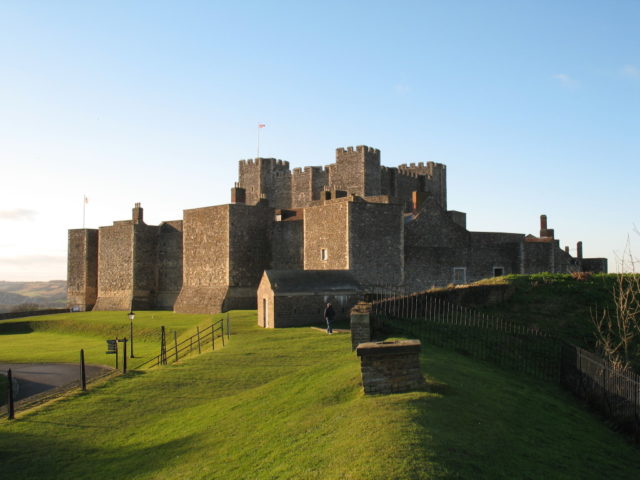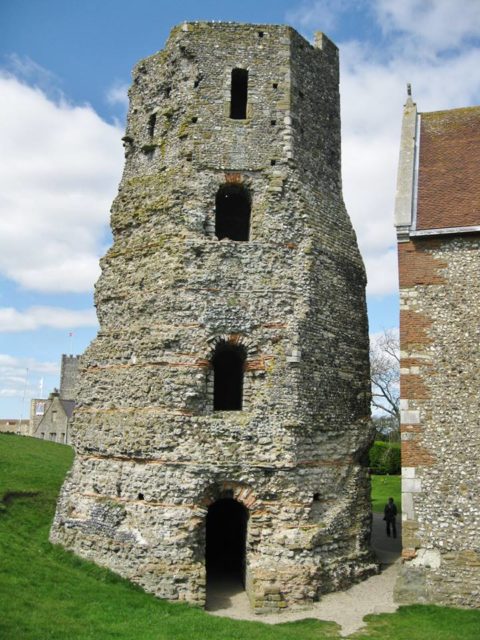The town of Dover, located on the English Channel in Kent, has historically been an important English settlement. It has been called the Key to England, being so close as it is to France. It was, therefore, important to England’s defense.
It is one of the Cinque Ports, the towns in Kent and Sussex that were charged with maintaining ships to protect the coast from invasion in medieval times. Even though the towns no longer serve that function, the ceremonial title Lord Warden of the Cinque Ports serves as a reminder of the historical importance of these towns.
Dover Castle was one of the most important castles in England.

It is certainly the largest, and one of the oldest. It is believed that the present site was defended with earthworks during the Iron Age or even earlier.
There is evidence of an Iron Age settlement there, and a Bronze Age mound was discovered beneath the castle church, St Mary in Castro. Next to the church is an 80 foot (24 meter) high pharos or lighthouse, which now serves as the bell tower of St Mary’s.
There is another to the west, on the other side of Dover, called Breddenstone, after the supposedly ‘lost’ village of Braddon. It is also called Devil’s Drop of Mortar.
The pharos was rediscovered in 1860 and has become the traditional site for the installation of the Lord Warden of the Cinque Ports. These ancient lighthouses were built by the Romans after they invaded England in 43 AD to guide shipping, for control of the Channel was vital to them, just as it was to the medieval English.
Dover, or Dubris, as the Romans called it, was the closest point to the European mainland. The Dour river, now mostly covered over, was then an important channel of trade. The Romans built a fort where the present castle stands.

The cliffs of Dubris provided a natural fortification. Indeed, when the Romans first invaded England in 55 BC Julius Caesar had been dissuaded from landing at Dover for fear of the British throwing javelins at his troops from the heights.
The Roman fleet in Britain, the Classis Britannica, protected the vital trade lanes to Gaul and also supported the garrison troops in Dubris. It was based however in Richborough Castle (Boulogne) in Gaul, with secondary bases in Dubris and Rutupiae (Richborough Castle).
After the Romans left Britain, the Saxons continued to garrison the fort. The Normans under William the Conqueror sacked the castle in 1066 and afterwards built the castle as it now stands.
